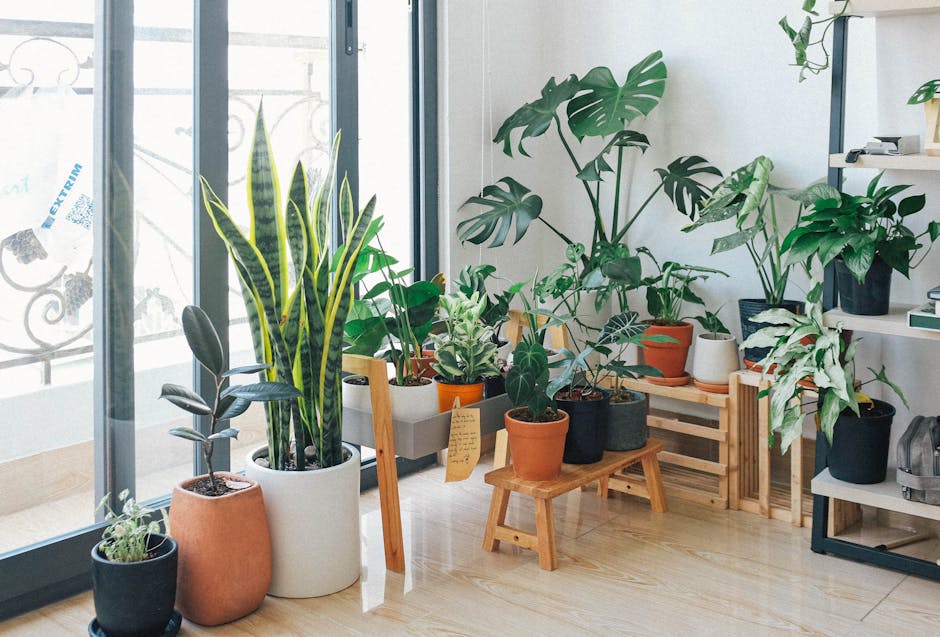Eco-Symbiosis: Design Spaces for Humans and Nature
Creating living and working environments that harmonize human presence with nature is the aspirational hallmark of sustainable living. Imagine your home adorned with vertical gardens, or your office sipping sunlight through its green roof. The art of eco-symbiosis isn’t just a lofty idea; it’s a transformative lifestyle that promotes biodiversity and sustainability while enhancing our daily interactions with the natural world. In this article, we’ll explore exciting techniques to integrate eco-friendly features like green roofs and natural habitats into urban and suburban settings. Along the way, we’ll share insightful DIY projects, compelling case studies, and interviews with pioneering architects and environmentalists who specialize in this crucial movement. Let's dive into the world of Eco-Symbiosis and discover how we can all contribute to a greener planet.
The Understanding of Eco-Symbiosis

At its core, eco-symbiosis refers to the symbiotic relationship between human environments and natural ecosystems. The concept encourages us to design spaces that not only minimize our environmental impact but also actively enhance the surrounding biodiverse systems. This goes beyond simply “going green”; it's about creating an intricate web of interactions that fosters a thriving ecosystem.
One inspiring example of eco-symbiosis is the implementation of green roofs. These gardens not only provide visual beauty but also contribute to cooling urban temperatures, managing stormwater, and providing habitat for various species. Implementing vertical gardens in high-rises comes with its own set of benefits, including improved air quality and reduced building energy consumption. By investing in eco-symbiotic designs, we serve as champions for biodiversity.
Techniques for Sustainable Design

Green Roofs: Nature’s Umbrella

Green roofs serve as the cornerstone of eco-symbiotic architecture. They provide various benefits, from insulation to biodiversity enhancement. By absorbing rainwater, they reduce runoff, which helps prevent urban flooding—a critical issue in densely populated areas. Many cities have started offering incentives for green roof installations, recognizing their potential for urban heat reduction and improved air quality. Moreover, they can increase property values.
Are you interested in exploring this further? Check out our article on Eco-Engineering Your Home to discover how biomimicry influences sustainable architecture.
Vertical Gardens: Climbing Towards Sustainability

Vertical gardens, or living walls, take the green concept to new heights—literally! These installations maximize limited urban space while promoting biodiversity. Various plant species can thrive on vertical surfaces, creating habitats for birds, insects, and other beneficial organisms. They also help regulate indoor temperature, providing a natural air conditioning effect, which can significantly cut down energy usage.
Initiatives like the “Wall of Life” in Paris highlight how urban centers can reclaim vertical space for ecological purposes. The project demonstrates the significant reduction in air pollution while serving as an aesthetic improvement in a bustling city.
Urban Micro-Habitats: Nature in the City

Perhaps the most exciting frontier of eco-symbiosis is cultivating urban micro-habitats, which support their surrounding ecosystems and foster community interactions. By transforming underutilized spaces (like vacant lots or abandoned parks) into native plant gardens, cities can improve biodiversity and provide educational opportunities. This approach helps residents connect with their local environment and empowers them to take action.
For those interested in getting their hands dirty, there are micro-gardening initiatives enabling you to create little green sanctuaries right in your neighborhood.
Case Study: The Bosco Verticale Experience

The Bosco Verticale (Vertical Forest) in Milan epitomizes the successful integration of eco-symbiotic designs in urban architecture. This iconic residential complex features thousands of trees and plants that cover its balconies, providing habitats for numerous bird species and insects. Beyond its aesthetic appeal, this structure plays an active role in urban biodiversity and serves as an air purifier.
The creators of Bosco Verticale envision a future where buildings act as living organisms capable of breathing and thriving, much like their occupants. This rich architectural tapestry serves as an anchor for sustainable urban design.
Community Interactions: Generating Engagement Through Eco-Design

One of the essential objectives of eco-symbiosis is to foster community relationships through nature. Green spaces, such as community gardens, offer individuals an opportunity to engage with their local environment and each other. These interactions can lead to a stronger, more resilient community that prioritizes sustainable living.
Residents can participate in workshops to learn practical gardening techniques or organize events celebrating local biodiversity. Case in point: community initiatives like the "Garden for Wildlife" campaign encourage citizens to plant wildlife-friendly gardens, contributing to a citywide effort to restore lost habitats.
Tips for DIY Eco-Symbiotic Projects

For those inspired to create eco-friendly spaces at home, here are some straightforward DIY projects you can undertake:
-
Start a Vertical Garden: Use recycled materials such as wooden pallets or fabric pockets to assemble a living wall. Select plants that suit your climate and the specific light conditions of your space.
-
Create a Pollinator-Friendly Garden: Choose native flowering plants that attract pollinators and provide educational signage about the importance of biodiversity.
-
Cultivate Edible Micro-Habitats: Plant a small herb garden or fruit shrubs in your backyard or even in pots on your balcony. This encourages sustainable food practices while supporting local biodiversity.
-
Implement Composting: Set up a compost bin to recycle kitchen scraps. This reduces waste destined for landfills while enriching your garden soil naturally.
Insights from Eco-Design Experts

We had the pleasure of speaking with leading experts in eco-symbiotic design, which fortified our understanding of the intersection between architecture, nature, and community. Architect Sarah Greene emphasizes the significance of ‘biophilic design’, stating, “It's about creating spaces that feel alive. We must prioritize connections—not just between buildings but between people and the ecosystems around them.”
Environmentalist John Mills also shared some compelling views on community-driven initiatives: “Involving locals in sustainable projects promotes a sense of ownership. It’s vital that we encourage public engagement for any eco-symbiotic designs to flourish.”
The Role of Technology in Eco-Symbiosis
Advancements in technology also play a pivotal role in promoting eco-symbiosis. Innovations such as smart water management systems and energy-efficient building materials support sustainable practices and reduce our overall environmental footprint. Tools like solar panels not only generate renewable energy but can also be incorporated into building designs to enhance green aesthetics.
Many architects are now employing AI to optimize these designs, making eco-friendly living accessible to everyone. Check out our article on how AI can optimize your sustainable living for more insights into technology’s potential in eco-friendly architecture.
Final Thoughts: Your Role in the Eco-Symbiotic Movement
The art of eco-symbiosis invites us not only to rethink how we build and inhabit our spaces but also to connect more deeply with nature. As we move to foster environments that celebrate biodiversity and sustainability, we cultivate a legacy of resilience for generations to come.
As individuals, we can contribute to eco-symbiosis through the choices we make, from DIY projects and community gardens to advocating for policies that prioritize green spaces. The challenge lies in engaging with our communities to create vibrant ecosystems.
Remember, creating a balance where humans and nature coexist is a journey, not a destination. Are you ready to take the plunge into creating eco-friendly spaces that reflect this harmonious relationship?
By crafting our environments with nature in mind, we are helping promote not only our well-being but the health of our entire planet. Join the eco-symbiosis movement and make your mark in creating a sustainable future!

